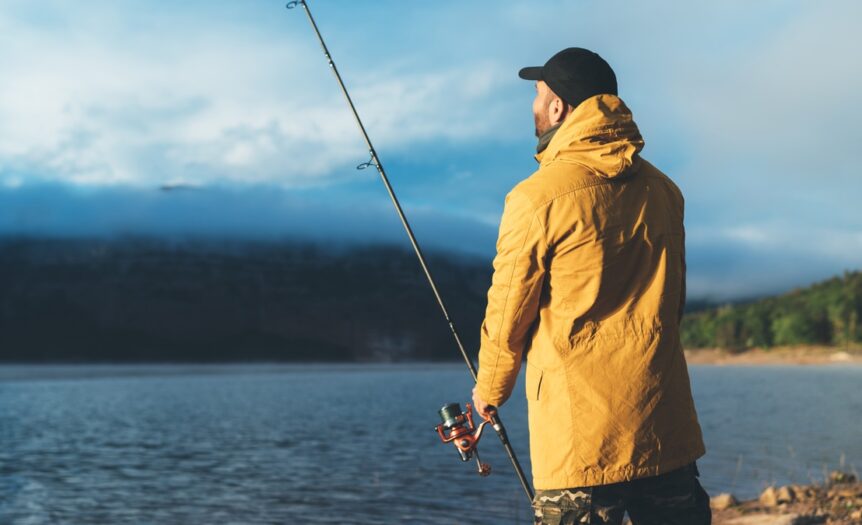Are you planning a fishing trip and looking for ways to boost your chances of success? Locating fish can be a challenge, but with the right strategies, you can dramatically improve your odds. With these five tips for locating fish during your next outing, you can find that sweet spot and start hooking catches right away.
1. Understand Water Habitats
Different species of fish prefer different environments, so knowing what to look for is crucial. Pay attention to water depth, temperature, and vegetation, as these elements often influence where fish congregate.
For example, bass tend to favor areas with ample cover, such as submerged logs or weeds, while trout are more often found in cooler, fast-moving streams. Learning to recognize these habitat preferences will help you target the right spots and increase your chances of a successful catch.
2. Follow the Food Chain
Smaller organisms such as plankton and insects serve as the primary food source for baitfish, including minnows and shad. These baitfish, in turn, attract larger predatory fish, such as bass, walleye, or pike. To increase your chances of a good catch, identify areas where baitfish are abundant.
Look for signs such as birds hunting at the surface or disturbances in the water, as these often indicate predator activity nearby. Matching your bait or lure to the natural prey in the area can further enhance your success.
3. Use Technology to Your Advantage
Modern technology has transformed fishing, providing tools that can significantly enhance your experience and success. By integrating these technologies into your fishing routine, you can save time, increase efficiency, and make the most of every trip.
For example, fish finders and sonar devices are invaluable for locating fish in deeper waters and understanding underwater structures such as drop-offs or submerged trees. However, you’ll need to know how to choose a battery for your fish-finder device to get the most out of it during your next trip.
4. Observe Your Surroundings
While technology can enhance your fishing experience, paying attention to your environment is equally important. Look for signs of fish activity, such as ripples, splashes, or birds congregating near the water, as these can indicate where fish are feeding.
Notice the water’s color and movement. Clear water might make fish more cautious, while murky water can provide cover for them. Staying attuned to these natural cues can improve your success and deepen your connection to the environment.
5. Pay Attention to Weather Conditions
The weather plays a significant role in fish behavior and movement. Overcast days are often ideal, as fish are more likely to venture out of cover to feed. On sunny days, focus your efforts on shaded areas or deeper water, where fish retreat to stay cool.
Additionally, changes in barometric pressure can impact fish behavior. Many fish become more active just before a storm or during periods of falling pressure. Wind direction is another factor to consider, as it often pushes baitfish and other food sources toward shorelines, attracting larger fish.
Reel in Your Next Catch With Confidence
For fishing enthusiasts, reeling in a catch isn’t set in stone. No matter where you’re headed, these five tips for locating fish during your next outing will ensure your time is productive and enjoyable.










 Deering Estate
Deering Estate
 Massage Envy South Miami
Massage Envy South Miami
 Calla Blow Dry
Calla Blow Dry
 My Derma Clinic
My Derma Clinic
 Sushi Maki
Sushi Maki
 Sports Grill
Sports Grill
 The Healthy Kitchen
The Healthy Kitchen
 Golden Rule Seafood
Golden Rule Seafood
 Malanga Cuban Café
Malanga Cuban Café

 Kathleen Ballard
Kathleen Ballard
 Panter, Panter & Sampedro
Panter, Panter & Sampedro
 Vintage Liquors
Vintage Liquors
 The Dog from Ipanema
The Dog from Ipanema
 Rubinstein Family Chiropractic
Rubinstein Family Chiropractic
 Your Pet’s Best
Your Pet’s Best
 Indigo Republic
Indigo Republic




 ATR Luxury Homes
ATR Luxury Homes


 2112 Design Studio
2112 Design Studio
 Hamilton Fox & Company
Hamilton Fox & Company
 Creative Design Services
Creative Design Services
 Best Pest Professionals
Best Pest Professionals
 HD Tree Services
HD Tree Services
 Trinity Air Conditioning Company
Trinity Air Conditioning Company
 Cisca Construction & Development
Cisca Construction & Development
 Mosquito Joe
Mosquito Joe
 Cutler Bay Solar Solutions
Cutler Bay Solar Solutions


 Miami Royal Ballet & Dance
Miami Royal Ballet & Dance
 Christopher Columbus
Christopher Columbus
 Pineview Preschools
Pineview Preschools
 Westminster
Westminster
 Carrollton
Carrollton
 Lil’ Jungle
Lil’ Jungle
 Frost Science Museum
Frost Science Museum
 Palmer Trinity School
Palmer Trinity School
 South Florida Music
South Florida Music
 Pinecrest Orthodontics
Pinecrest Orthodontics
 Dr. Bob Pediatric Dentist
Dr. Bob Pediatric Dentist
 d.pediatrics
d.pediatrics
 South Miami Women’s Health
South Miami Women’s Health

 The Spot Barbershop
The Spot Barbershop
 My Derma Clinic
My Derma Clinic




 Miami Dance Project
Miami Dance Project

 Rubinstein Family Chiropractic
Rubinstein Family Chiropractic
 Indigo Republic
Indigo Republic

 Safes Universe
Safes Universe
 Vintage Liquors
Vintage Liquors
 Evenings Delight
Evenings Delight





 Atchana’s Homegrown Thai
Atchana’s Homegrown Thai
 Baptist Health South Florida
Baptist Health South Florida

 Laser Eye Center of Miami
Laser Eye Center of Miami
 Visiting Angels
Visiting Angels
 OpusCare of South Florida
OpusCare of South Florida

 Your Pet’s Best
Your Pet’s Best





 HD Tree Services
HD Tree Services
 Hamilton Fox & Company
Hamilton Fox & Company


 Creative Design Services
Creative Design Services